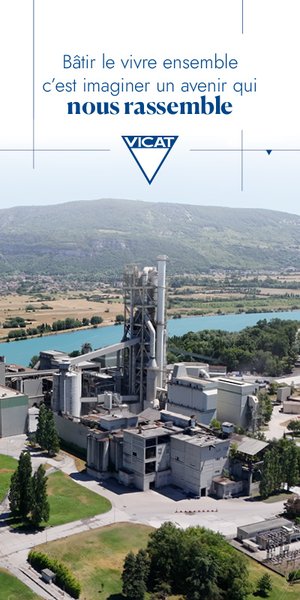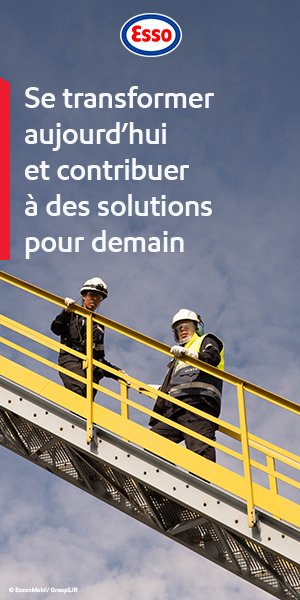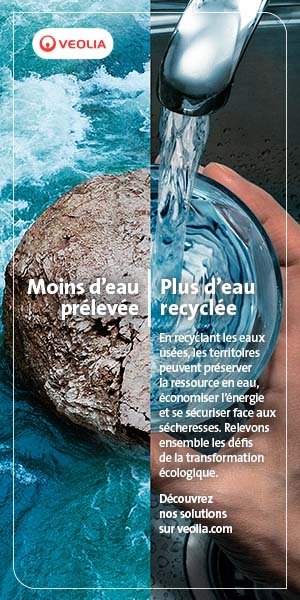Politique Internationale — Hydrogen is talked about a lot but few people really know what it’s about. How can this industry be summed up in a few words? What are its main uses?
Laurent Carme — Hydrogen is firstly an essential chemical element. It is the element that is the most present in the universe, but rarely in its pure form. Hydrogen is already used in many industrial applications. Through chemical reactions, this agent serves in refineries and/or on petrochemical sites; it notably permits the production of ammonia — which is an ingredient in fertilisers — or even in methanol — used in turn in the chemical industry to produce fuel, plastics or paint. To give you an idea of volume, we consume about 115 million metric tons of hydrogen per year in the world, of which 70 million tons are in its “pure” form, the rest being mixed with other gases.
On the fringe of its applications in industry, new uses have emerged that make hydrogen a source of storage or energy enhancement. With, as its aim, light mobility, through energy extensions of hydrogen autonomy incorporated in electric vehicles, but also heavy mobility, with hydrogen fuel cells for buses, trucks or trains. Within this, hydrogen allows the production of electricity onboard the vehicle which considerably increases its autonomy. Nevertheless, traditional processes stumble over an environmental problem. When a kilogram of hydrogen is produced, based on hydrocarbons or coal, 10 to 20 kilograms of CO2 are generated depending on the means of production. For the 70 million tons already cited, you have to reckon with 830 million tons of carbon. Armed with this fact, the challenge for the years to come is to transform “grey” hydrogen into “green”, that is to say to decarbonise this gas. For that, renewable energies have to replace fossil. A company like McPhy has positioned itself precisely on this niche, through two markets in particular: on the one hand, the conception and manufacture of electrolysers — gear that produces a de-carbonised hydrogen out of water and renewable electricity; and on the other hand, the construction of hydrogen stations which will permit vehicles — both light and heavy — to provide a full tank of zero-carbon hydrogen in just a few minutes.
P. I. — Is this interest in de-carbonised hydrogen shared by many countries? Which are the most dynamic regions and/or institutions? Do public authorities back this sector?
L. C. — You have to go back just two short years to come across a surge in hydrogen almost everywhere in the world. On the global scale, the Hydrogen Council (HC) is an organisation of reference that brings together some 80 industrialists with clear ambitions. Several big French groups are represented, among which there are EDF, Engie or Air Liquide. McPhy is also an active member. On the level of Europe and France, the Hydrogen Europe and AFHYPAC associations bring together the main actors on the market. The European Commission plans to back this effort: in the summer of 2019, within the framework of the Horizon Europe programme, a partnership for clean hydrogen was put on the rails. It aims to achieve a synthesis between knowledge and technological or financial resources — stemming from both public and private spheres. In France, the Multiannual Energy Programme (PPE) — the authorities’ roadmap for 2018-2028 — is banking on a progressive development of hydrogen. The scenarios drawn up by Nicolas Hulot in 2018, when he was minister for Ecological Transition, serve as their base. The main aim is to reach 10 per cent of decarbonised hydrogen in the industry by 2023, then a range of between 20 and 40 per cent by 2028. At the beginning of 2020, Bruno Le Maire at the Finance Ministry and Elisabeth Borne at Ecological Transition launched a new support package hinged on two calls for expressions of interest. The first aims to encourage the recourse to hydrogen in the railway sector whereas the second concerns “projects on a European or national scale on the conception, production and use of hydrogen systems”. The idea is to help the sector move to a higher gear in use or manufacture.
P. I. — Since when has McPhy been on this landscape? What were the important stages that defined its rise?
L. C. — McPhy was created in 2008. The first years were devoted to research and development activities in the domain of energy storage. From the beginning, the company worked on hydrogen, encouraged by partnerships with the Atomic Energy Commission (CEA) and the National Centre for Scientific Research (CNRS). Without false modesty, it is one of the pioneers. In 2012, the move was made to devote ourselves exclusively to electrolysers and recharging stations. In 2014, McPhy was floated on the stock exchange, an operation designed primarily to increase means of financing. Still today, innovation takes up an important place for McPhy. It should allow us to enlarge our range of products at regular intervals. In 2018-2019, a capital stage was crossed with the entry into service of the first demonstrators of a larger size, in the order of 1 to 5 MW for electrolysers, for example. From that moment, we passed to an industrial level with, in some ways, a broadening of the base of our solutions. Personally, I arrived at the senior management of the company in the autumn of 2019. After some 10 years spent in the energy sector, at Alstom and General Electric, with missions more specifically articulated around renewables. For his part, Pascal Mauberger, the co-founder of the company, is still there, as non-executive chairman. To sum up, McPhy is a company in strong growth which is considered indissociable from largescale zero-carbon hydrogen development projects. It has taken care not to cut corners, which is indispensable for getting into position for a technology of the future.
P. I. — In 2018, EDF bought a stake in McPhy. What motivated this operation?
L. C. — On McPhy’s trajectory, EDF’s purchase of shares naturally was a major event. Since June 2018, EDF has been present in McPhy’s capital, to the tune of about 21 per cent. The electricity giant became our biggest shareholder but it is not our only partner of reference: we also have the Banque publique d’investissement (BPI) for about 8 per cent. In 2019, we had a share capital increase of 7 million euros into which EDF and BPI both contributed so as to keep the same proportion of capital; they clearly demonstrated their confidence in the company’s potential. The choice of EDF as shareholder number one was self-evident: McPhy wanted to be able to rely on a solid partner, one that was a vital player in the energy sector and likely also to give maximum visibility to our operations. In effect, the link with EDF is not just capitalistic. We also concluded a technological and commercial agreement. It is not exclusive — in the sense where McPhy can sell its products to companies other than EDF and EDF can work on hydrogen with companies other than McPhy — but it is attractive. This partnership offers us some great opportunities: for example, we have access to the research and development strategies of EDF to speed up our work. You would have to ask EDF for the reasons that prompted it to come alongside us, but we have some elements of a reply through statements by Jean-Bernard Lévy. The CEO of EDF regularly underlines his attachment to the development of de-carbonised hydrogen. He really considers this domain promising for future solutions leading to an enlarged access to decarbonised energy. When we hear him, we at McPhy do not have the impression at all that this is a trial run or yet another equity purchase among others, but really a long-term commitment.
P. I. — How is McPhy’s portfolio of projects organised today?
L. C. — McPhy lays claim today to 37 megawatts (MW) of electrolysis, already completed or in the process of being set up. In parallel, we are taking part in a consortium on the major site of Delfzijl in the north of The Netherlands. By its power — 20 MW of electrolysis — this installation is one of the biggest de-carbonised hydrogen projects in the world. The fact that we are associated, with two big Dutch gas operators, Nouryon and Gasunie, demonstrates our expertise. In Delfzijl, our technology will allow the conversion of renewable electricity into 3,000 metric tons of zero-carbon hydrogen per year. In this consortium, the methanol producer BioMCN is also to be found, since the combination of hydrogen and CO2 permits the production of green methanol. I talk about this project because de-carbonised hydrogen sites do not use just one single technology. On the contrary, several projects designed to decarbonise energy can coexist. In France, alongside GRTgaz, the biggest gas network manager in France, we contributed to the building of the only industrial MW-scale de-carbonised hydrogen demonstrator: the Jupiter 100, based in Fos-sur-Mer in the Bouches-du-Rhône department, is the anchor point of the Power-to-gas sector, that is the conversion of electricity of renewable origin into hydrogen injected into the networks. McPhy also has as a reference, already built or under construction, 25 hydrogen stations and has become established as a key partner in the deployment of the zero-emission mobility market. We have notably equipped the first hydrogen station for buses in France and the first hydrogen station connected to an electrolyser to produce zero-carbon hydrogen on-site with electricity from a renewable source.
P. I. — One of the reproaches sometimes made about de-carbonised hydrogen concerns its price. Solutions seem to be very costly to put in place. And yet the question of the competitivity of the price of energy is crucial. We can see this with renewables: for example, the first calls for tender for offshore windfarms were negotiated well above 200 euros the megawatt-hour (MWh). A few years later, for the granting of the Dunkirk field, this tariff dropped below 140 euros. In solar too, progress in competitivity is patent with projects capable of competing directly with traditional energy. Where does hydrogen stand? Is a fall in costs foreseeable in the medium term?
L. C. — Firstly, claiming that the future of hydrogen would be overshadowed by its high price is false. That would mean that we are still in the testing phase and that the passage to scale, that is the access to an industrial stage, is still far off. But this is not the case, as can be seen from the constructions and projects just mentioned. Let’s talk figures now, knowing that the unit of reference in hydrogen is not the MWh but the kilogram. To reach “network parity” — that is the possibility of directly competing with other sources of energy — hydrogen should be sold at about 2.5 euros per kilogram. This is, of course, a matter of zero-carbon hydrogen, with a price that incorporates the necessary industrial decarbonisation measures. Today, the price wavers between 4 and 6 euros a kilogram. The calculations are easy to do: the sector must still divide its costs by two to be competitive. As a guide, other renewable energies (solar, wind and biomass…) have divided theirs by a coefficient going from five to 10 in recent years. Hydrogen’s ambitions are therefore perfectly reasonable, given that electricity accounts for 80 to 85 per cent of the cost of manufacturing hydrogen. And the production of green electricity is undergoing an exponential drop in price. We are entering a virtuous circle: the cost of providing energy is dropping, bringing with it a fall in the cost of equipment such as electrolysers leading to a more and more attractive price for de-carbonised hydrogen.
P. I. — You are in effect saying that the hydrogen sector will not be for ever subsidised…
L. C. — Like other renewable sectors or those that are promising for the future, we are sometimes reproached for being a subsidised activity. But this support is necessary to give the impulsion that allows hydrogen to become a fully-fledged industry. The example of green energies is indicative: if solar or wind have today reached network parity in a large number of projects, they owe this to a solidly anchored system of support by public authorities which allowed them to develop and to become competitive. In the case of hydrogen, we do not have a tariff for the purchase of the energy produced, nor a complement of payment with regards to the market price — to use some of the mechanisms in use in renewables. Aid is given on a case-by-case basis, according to each project: so, for our construction project of 20 MW in The Netherlands, aid from the European Commission, via the public-private partnership of FCH-JU (Fuel Cell and Hydrogen Joint Undertaking) between the Commission and Hydrogen Europe, amounts to 11 million euros. In parallel, a Dutch investment fund, Waddenfonds, brought in 4 million euros. These two sources of subsidy cover a significant part of the initial investment. In France, the Hulot plan foresaw for the whole sector an envelope of 100 million euros a year for three years. In the framework of the PPE, we now reckon on an annual contribution of 50 million. But the principles of according these budgets are not yet definitively delineated.
P. I. — Investments in hydrogen are growing, but is France really ready to give your industry its chance?
L. C. — Hydrogen is no longer a domain limited to research and development activities that benefit from it being a fad. For two or three years now, a large number of decision-makers — I include the politicians — have become aware of the importance of this industrial solution. Each of them has well in mind the Paris agreement of 2015 and the absolute necessity to limit the rise in global warming. In this context, de-carbonised hydrogen is seen as a good means of contributing to the objectives of decarbonisation. Everyone recognises that not to support this sector would amount to depriving ourselves of a basic element in the service of ecological transition. On the operational level, experiments are being stepped up and there are projects in the pipeline. For example, in 2019, McPhy delivered a big station to the urban conglomeration of
Lens-Béthune in the north of France, the first hydrogen station for buses in France, designed to serve a fleet of 10 vehicles. This initiative is not isolated: the addition of programmes and competencies, with the totality of the actors, translates into a real mobilisation. The stakes, let’s repeat it, are high: to replace traditional fuel in vehicles, stock electricity and decarbonise natural gas. Nothing less at a moment when ecological transition is being called on to speed up.
* McPhy Group CEO.



















